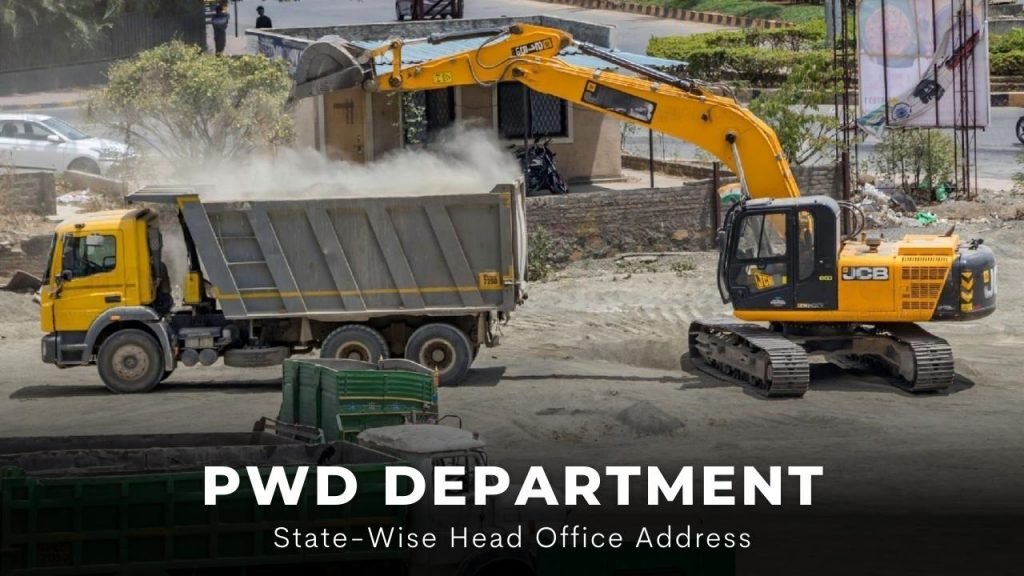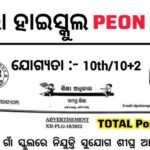The Public Works Department (PWD) plays a crucial role in the development and maintenance of public infrastructure in India. From roads to buildings, and from water systems to bridges, the PWD ensures that essential public facilities remain functional and well-maintained. This detailed article explains everything you need to know about PWD, including its functions, structure, importance, and how it operates across Indian states.
What is the Public Works Department (PWD)?

The PWD (Public Works Department) is a government body responsible for the construction, design, and maintenance of public infrastructure such as roads, highways, bridges, government buildings, and water supply systems. Every Indian state has its own PWD, and at the national level, the Central Public Works Department (CPWD) handles similar duties for central government projects.
PWD is vital for the execution of infrastructure projects and is considered a backbone of civil engineering services in India.
History of PWD in India
- PWD was established during British rule in the mid-1800s. History of PWD
- It began by handling military roads, irrigation, and public buildings.
- Post-independence, Indian states formed their individual PWDs to cater to state-specific infrastructure development.

Organizational Structure of PWD
PWD works under the state government. Here’s the typical structure:
| Position | Responsibility |
|---|---|
| Chief Engineer | Heads the entire state PWD |
| Superintending Engineer | Manages regional divisions or zones |
| Executive Engineer | Controls district-level projects |
| Assistant Engineer | Assists in drawing, execution, and inspection |
| Junior Engineer | Handles site supervision and record maintenance |
PWD is often divided into wings such as:
- Roads & Bridges Wing
- Buildings Wing
- Water Supply/Irrigation Wing
Also Read Maximum Bearing Capacity of Soil: A Complete Guide for Civil Engineers in India
Functions of the PWD Department
1. Construction of Roads and Bridges
PWD builds and maintains national highways (under CPWD), state highways, and district roads.
2. Construction of Public Buildings
PWD constructs government schools, hospitals, police stations, courts, and other civic buildings.
3. Water Supply and Sanitation
Some PWDs have dedicated wings for public health engineering, water supply, drainage, and sewerage management.
4. Infrastructure Maintenance
PWD ensures the regular repair and maintenance of roads, culverts, flyovers, and government buildings.
5. Disaster Rehabilitation
PWD plays an active role in restoring damaged infrastructure after floods, earthquakes, or other natural disasters.
6. Tendering and Contracting
PWD manages public tenders, bid evaluations, and contractor appointments for all government infrastructure projects.
7. Consultancy and Design Services
The department provides engineering support, prepares Detailed Project Reports (DPRs), and offers expert advice to the state on technical infrastructure matters.
Difference Between PWD and CPWD
| Parameter | State PWD | Central PWD (CPWD) |
| Control | State Government | Ministry of Housing and Urban Affairs |
| Area of Operation | Within the respective state | Central government buildings across India |
| Projects | Roads, local government buildings, irrigation | Parliament, central universities, ministries |
| Engineering Cadre | Appointed by state government | Central Engineering Services |
Why PWD is Important in India
PWD is essential in the following ways:
- Economic Development: Quality roads and buildings boost trade and services.
- Employment Generation: Infrastructure work creates jobs for laborers, engineers, and contractors.
- Public Welfare: Well-built schools, hospitals, and civic buildings improve living standards.
- Connectivity: Road and bridge construction improves transport and mobility across rural and urban areas.
Recent Developments in PWD (as of 2025)
- Many states are digitizing tendering systems to improve transparency.
- Delhi PWD is developing its own engineering cadre to reduce dependency on CPWD.
- New helplines and grievance redressal systems are being introduced for citizens.
- Emphasis is increasing on sustainable and green construction methods in public infrastructure.
Examples of State PWD Projects
| State | Notable Projects Handled by PWD |
| Maharashtra | Mumbai-Pune Expressway, Government hospital buildings |
| Delhi | Flyovers, foot-over bridges, rainwater harvesting |
| Kerala | Rural road development under Pradhan Mantri Gram Sadak Yojana (PMGSY) |
| Tamil Nadu | Smart classrooms in government schools |
Challenges Faced by PWD
- Budget constraints
- Corruption in tenders
- Delayed project approvals
- Lack of skilled workforce
- Over-reliance on outdated manual systems
Career Opportunities in PWD
PWD is one of the largest recruiters of civil engineers in India. Engineers are hired via:
- State Public Service Commission Exams
- Contractual appointments
- Promotions from junior levels
Designations include:
- Junior Engineer (JE)
- Assistant Engineer (AE)
- Executive Engineer (EE)
FAQs about Public Works Department (PWD)
Q1. Who controls the PWD department?
Each state government controls its own PWD through a principal secretary and a chief engineer.
Q2. What is the full form of PWD?
PWD stands for Public Works Department.
Q3. Can a civil engineer join PWD?
Yes. Civil engineers can join as Junior or Assistant Engineers through state government recruitment exams.
Q4. Does PWD only work on roads?
No. It works on buildings, irrigation, water supply, and bridges too.
Q5. Is PWD different from a municipal body?
Yes. Municipal bodies handle city-level services like street lights, while PWD works on larger infrastructure.
Conclusion
The Public Works Department (PWD) is a critical arm of governance in India, responsible for shaping infrastructure that serves millions. From building hospitals and schools to maintaining roads and water pipelines, PWD plays a behind-the-scenes role in everyday life. For civil engineers, understanding how PWD works can open doors to government jobs and opportunities to contribute to nation-building.
With recent reforms, digital tools, and a growing focus on green development, the PWD is evolving fast. It remains one of the most respected departments for infrastructure planning and implementation in India.










